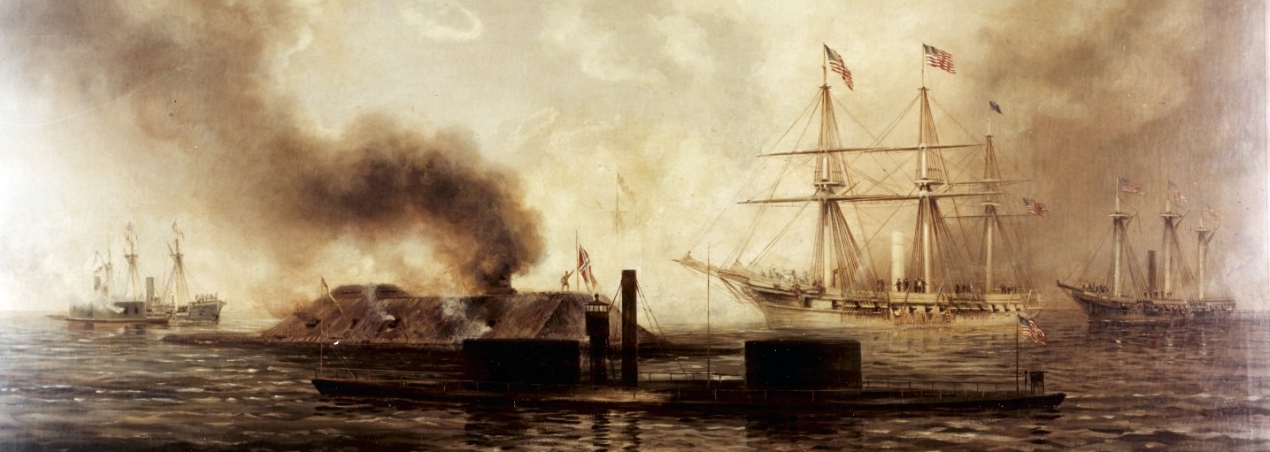Civil War Naval Operations and Engagements
1864

Xanthus Smith, Battle of Mobile Bay, 5 August 1864, 1890, oil on canvas, 101.6 x 167.6 cm, U.S. Naval Academy Museum, Annapolis, Maryland (KN-843).
Note: This page is a work in progress. Please be patient as we continue to expand on the information available here. Look for the EXPLORE tab to see a full battle summary if available.
Plymouth
17–20 April 1864
On 17 April 1864, Brigadier General Robert F. Hoke, C.S. Army, and his infantry initiated an effort to recapture the Federal-occupied town of Plymouth, North Carolina. Two days later, Captain James W. Cooke and the crew of the new ironclad, CSS Albemarle, arrived to support their infantry. The ironclad sank one Union vessel and damaged another before the remaining U.S. Navy ships departed the area. Brigadier General Henry W. Wessells, U.S. Army, and his garrison surrendered a day later.
Albemarle Sound
5 May 1864
On 5 May 1864, Captain James W. Cooke, in command of CSS Albemarle, traveled down Roanoke River accompanied by two other vessels. His mission was to regain control of Albemarle and Pamlico Sounds on the coast of North Carolina in anticipation of a planned attack on New Bern. Arriving in Albemarle Sound, his small flotilla engaged eight Union gunboats of the U.S. Navy blockading squadron, commanded by Captain Melancton Smith. Although both sides suffered damage to their vessels in this naval battle, the Confederate flotilla retreated upriver and abandoned their mission.
Cherbourg
19 June 1864
On 19 June 1864, Captain John A. Winslow, in command of USS Kearsarge, waited off the coast of Cherbourg, France, where CSS Alabama had anchored for repairs. Captain Raphael Semmes, in command of Alabama, realized he could not outrun the Federal warship, nor could he remain in port. The battle that ensued was the last battle for the infamous Confederate commerce raider.
Mobile Bay
5–23 August 1864
On 5 August 1864, Rear Admiral David Glasgow Farragut led an 18-ship U.S. Navy squadron toward Mobile Bay, Alabama. After briefly firing upon Fort Morgan at the mouth of the bay, U.S. Navy warships steamed forward across the makeshift Confederate minefield into the bay. The ships clashed with Admiral Franklin Buchanan’s fleet before the Confederate ships surrendered or fled. Without the support of the Confederate navy, the garrison at Fort Morgan surrendered after three weeks under siege by the U.S. Navy and the U.S. Army.
Fort Fisher
24–27 December 1864
In December 1864, Wilmington, North Carolina, was one of the two remaining Confederate-held ports on the Atlantic. Fort Fisher was the largest defensive position on the entrance to the Cape Fear River and the port of Wilmington. On 24 December 1864, a fleet of U.S. Navy gunboats under command of Rear Admiral David Dixon Porter began shelling Fort Fisher. Major General Benjamin Butler, U.S. Army, commanded the amphibious assault on the fort. Three days into the naval bombardment of the fort, Butler and Porter withdrew from the fight. The fort remained in Confederate control until 15 January 1865.


